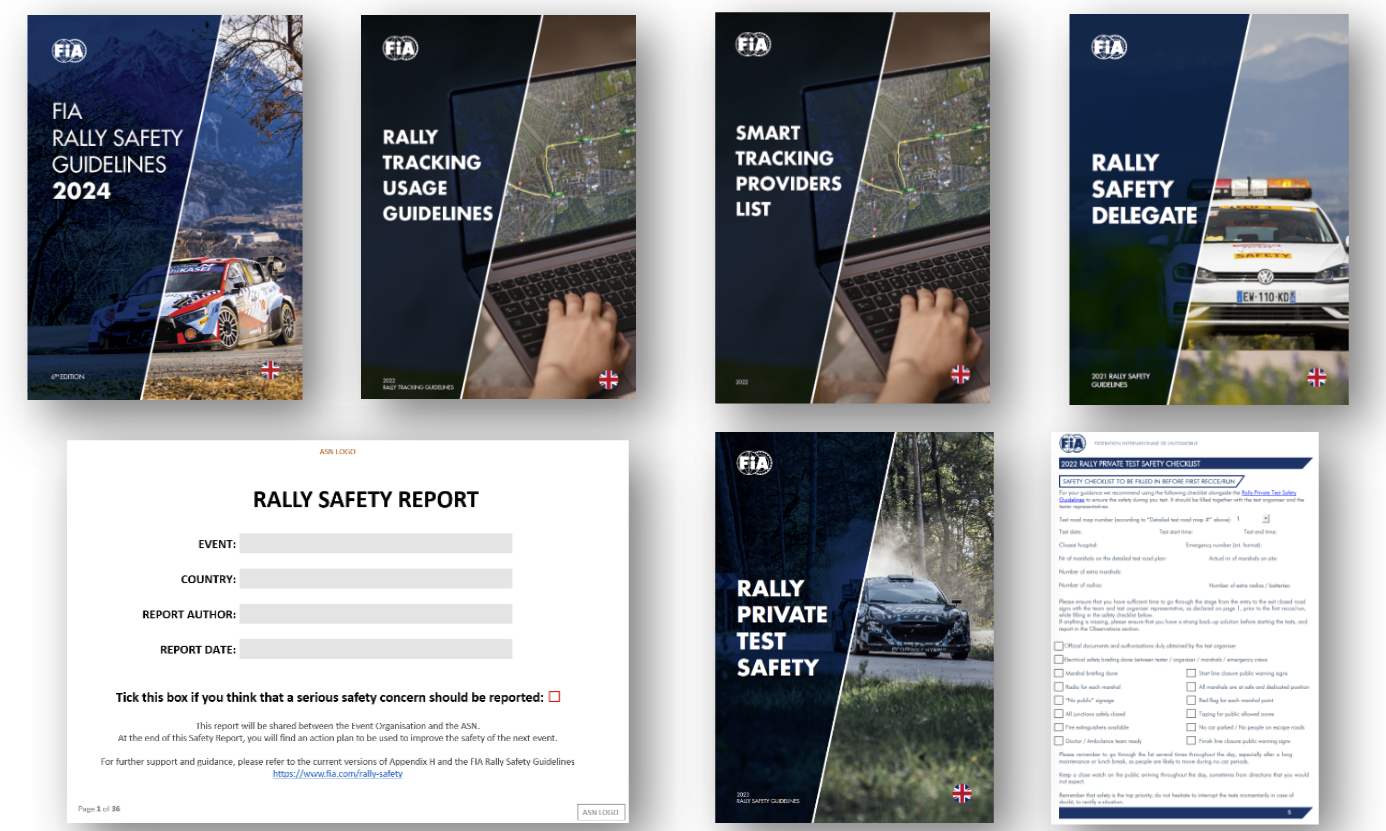Spectator safety at closed road events took centre stage on Day 3 of FIA Safety Week 2025 with experts from the Federation highlighting the need for effective planning of fan areas and secure stages as well as revealing AI innovations designed to make safety easier to monitor during rally stages.
Focusing initially on general safety at rallies, FIA Head of Operational Safety Clément Lauté pointed to a series of common safety issues, with spectator safety at the top of the list. “Spectator safety is one of the most important issues,” he said. “And most of the time it’s all about communication. You can prepare everything you want but you need to communicate it to the spectators. Otherwise, it will be useless to deploy the safety measure if they are not able to understand what you are providing to them to safely enjoy an event. And again, creation of spectators areas is also key. You will need to have a spectators area to be able to control the crowd.”
FIA WRC Safety Manager Nicolas Klinger highlighted the safety of marshals pointing to safe position as a key concern. He recommended that designated positions be specified in rally safety plans. He also spoke about the benefits of having a spare marshal team with appropriate material available to support the safety caravan. He went on to highlight the need for careful stage implementation insisting that a key aspect of ensuring the safe running of a stage is respect for the safety plan by officials.
He also stressed the importance of the safe positioning of anti-cut devices and the coherent taping of areas to make go and no-go areas clear to spectators, officials and to the personnel in the safety caravan. Klinger then turned the safety caravan itself, saying that every vehicle and member of the safety caravan must have a clearly defined role such as checking of taping or marshal positions and that the caravan must be equipped with materials needed to fulfil its function.
FIA Closed Road Safety Engineer Yann Dion then updated participants on tracking systems for regional rallies, informing them of the requirements needed to meet FIA approval, particularly highlighting that devices must not have an accessible on/off switch to ensure that it cannot be disabled.
Lauté added that if companies keen to develop tracking devices suitable for FIA use on regional rallies, they should contact the Closed Rally Safety group.
The seminar also discussed the growing role of navigation apps in helping to keep rallies safe, with Yann Dion explaining that proactively informing major navigation apps such as Google Maps or Waze about the rally road closures is an effective way to prevent unauthorized access and ensure safety during the event.
Adding to the focus on new technology, Lauté revealed that the FIA will this year deploy new artificial intelligence safety cameras in the FIA European Rally Championship.
“The next step will be to work on a specification to be able to have more providers for this kind of device and for it to be available to ASNs for use during their own national events. The camera is a small device, fixed to the roll cage, close to the windscreen and a computing box anchored at the bottom of the car, on the roll cage in the location of the spare wheel. And the purpose of this device is to send a live snapshot to the rally control room through a user interface to be able to address any issue that will be detected on the stage in the close collaboration between the Chief Safety Officer and the ASN or FIA Safety Delegate to make sure that the situation will be clear and the stage will be safe to run if there is an issue during the live stage. When the rally is on, you have people moving. You want to see them, and you want to be able to treat the issue or to stop or delay the stage, if, if it’s not manageable.”
The second part of the session turned to safety on Cross Country events and Hill Climbs. On Cross Country rallies the trio again pointed to spectator safety as the major concern, highlighting the need to identify and isolate high-risk areas where spectators may try to access, such as near villages, main roads, and areas with height differences.
They also highlighted the need to mitigate possible face-to-face collisions on stages through the use of signage and physical barriers and again stressed the safe placement of refuelling areas owing to the volume of fuel involved and hot cars operating in harsh environments.
Lauté also noted that tracking specifications, as used in regional rallies will be developed for use in Cross Country competition and will be deployed this year.
With regard to Hill Climb events, Rémi Sudre, FIA Hill Climb Safety Delegate presented a comprehensive review of safety concerns participants need to be aware of with specific focus on safety prior to the start, through the prevention of mechanically heating tyres and brakes in the pre-start area to prevent dangerous driver behaviour and the use of chicanes to slow down cars and improve safety.
He also pointed to finish areas being a concern and suggested maintaining marshal presence and yellow flag signalling after the finish line to manage potential incidents.
Finally, the session closed with Lauté pointing participants to FIA Rally Safety resources at: https://www.fia.com/rally-safety & https://www.fia.com/hill-climb-safety
Road Safety Safety1SafetyRoad Safety00Tuesday, February 11, 2025 – 2:44pmTuesday, February 11, 2025 – 2:44pm
Safety1SafetyRoad Safety00Tuesday, February 11, 2025 – 2:44pmTuesday, February 11, 2025 – 2:44pm
Source : Fia












